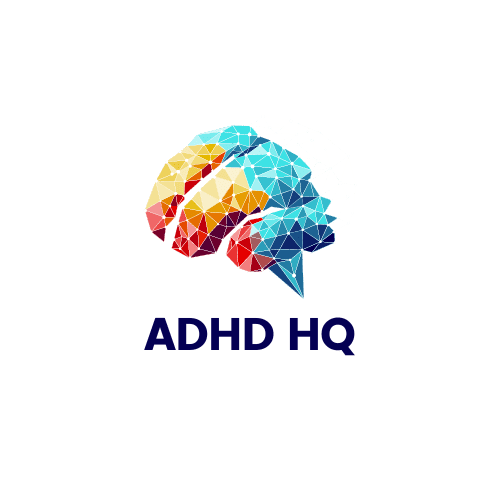Adhd-Rs-Iv
Back in the day, when tackling ADHD evaluations, the ADHD-RS-IV came into play as a reliable instrument for evaluating symptoms. As I explore the intricacies of this rating scale, a deeper understanding of its components and implications emerges.
From the important role parents play in providing feedback to the significance of teacher input, the ADHD-RS-IV offers a detailed view of a child's behavior.
Stay tuned to unravel how this tool influences diagnosis and treatment strategies, shedding light on its practical applications in clinical settings.
Key Takeaways
- ADHD-RS-IV aids in assessing ADHD symptoms accurately.
- Parental and teacher inputs enhance diagnostic precision.
- Treatment adjustments align with symptom trajectory insights.
- Monitoring progress with ADHD-RS-IV optimizes treatment effectiveness.
Understanding ADHD-RS-IV Components

The components of the ADHD-RS-IV, a rating scale used to assess ADHD symptoms based on DSM-IV criteria, consist of inattention and hyperactivity-impulsivity subscales.
The inattention subscale includes 9 items that evaluate behaviors such as making careless mistakes, difficulty sustaining attention, and being forgetful in daily activities.
On the other hand, the hyperactivity-impulsivity subscale also comprises 9 items that assess behaviors like fidgeting, excessive talking, or interrupting others.
These subscales are crucial in providing a thorough evaluation of ADHD symptoms in children at home over the past 6 months.
Importance of ADHD-RS-IV in Diagnosis

The ADHD-RS-IV serves as a structured tool to assess ADHD symptoms based on specific criteria, aiding in the diagnostic process. Its importance lies in providing a standardized method for clinicians to gather important behavioral information over a defined period.
Diagnostic Tool Overview
Utilizing the ADHD-RS-IV in clinical assessments offers a structured approach for evaluating ADHD symptoms in children based on parent-reported behaviors.
- The ADHD-RS-IV is a standardized tool for evaluating ADHD symptoms through parent ratings.
- It evaluates a child's behavior at home over the past 6 months, focusing on inattention and hyperactivity-impulsivity.
- Clinicians caution against skipping more than 3 items on the scale to guarantee accurate results.
- Scoring involves calculating raw scores for the subscales and converting them to percentile scores.
This rating scale alone doesn't confirm an ADHD diagnosis but serves as a valuable resource for clinicians in comprehensively evaluating ADHD symptoms in children.
Clinical Assessment Significance
In clinical assessments, the ADHD-RS-IV serves as an important tool for evaluating ADHD symptoms in children based on parent-reported behaviors. This parent-rated scale aligns with diagnostic criteria outlined in the DSM-IV, offering separate subscales for inattention and hyperactivity-impulsivity, each with 9 specific items.
By reflecting on the child's behavior over the past 6 months, parents provide valuable insights for clinicians. However, caution is necessary during scoring to prevent skipping multiple items, ensuring accurate evaluation.
While the ADHD-RS-IV isn't a standalone diagnostic tool, its role in providing detailed information on ADHD symptoms from primary caregivers is essential in the diagnostic process, aiding clinicians in making well-informed assessments and treatment decisions.
Administering and Scoring ADHD-RS-IV

When administering the ADHD-RS-IV, it's important to follow specific guidelines to guarantee accurate scoring. Understanding the scoring methods and administering procedures is key to obtaining reliable results.
These points are essential for clinicians aiming to assess ADHD symptoms effectively.
Scoring Methods Overview
I'll outline the standardized procedure for administering and scoring the ADHD-RS-IV to guarantee accurate evaluation of ADHD symptoms based on specific criteria outlined in the DSM-IV.
- Utilize parent ratings to assess ADHD symptoms in children.
- Evaluate inattention and hyperactivity-impulsivity separately through 9-item subscales each.
- Make sure all items are completed to avoid impacting interpretation.
- Convert raw scores for inattention and hyperactivity-impulsivity into percentile scores for comparison.
The ADHD-RS-IV provides detailed scoring guidance in the DuPaulGJ et al.'s reference, aiding in the consistent and reliable assessment of ADHD symptoms in children. By following the prescribed steps and guidelines, accurate percentile scores can be obtained for a thorough evaluation of ADHD symptoms based on the DSM-IV criteria.
Administering Procedures Explained
Administering the ADHD-RS-IV involves parents evaluating ADHD symptoms in children according to the DSM-IV criteria. This structured process utilizes the ADHD Rating Scale-IV, obtaining parent ratings on 18 items focusing on inattention and hyperactivity-impulsivity.
Raw scores are derived by summing odd-numbered items for inattention and even-numbered items for hyperactivity-impulsivity. It's important not to skip 3 or more items as this may impact scale interpretation.
While the scale aids in evaluating symptom severity, it isn't intended for diagnostic purposes. To gauge mental health accurately, the total raw score is converted to percentile scores based on provided scoring profiles for clinical evaluation.
Understanding and interpreting the scale results play an important role in effective assessment and intervention planning.
Role of Parents in Completing ADHD-RS-IV

Parents' active involvement in completing the ADHD-RS-IV assessment is essential for providing valuable insights into their child's behavior patterns related to ADHD symptoms. The ADHD Rating Scale-IV relies on parents to accurately report on their child's behaviors at home, forming a critical part of the diagnostic process. Here are four key ways in which parents contribute to the completion of the ADHD-RS-IV:
- Key Role: Parents play a pivotal role in the assessment process by offering unique observations of their child's behavior in familiar settings.
- Symptom Assessment: Parents independently complete the ADHD-RS-IV, detailing inattention and hyperactivity-impulsivity symptoms exhibited by their child.
- Behavior Patterns: Through parental input, clinicians gain a thorough understanding of the child's behavior patterns, aiding in accurate diagnosis and treatment planning.
- Treatment Insights: The completion of the ADHD-RS-IV by parents enables clinicians to tailor interventions effectively based on the specific symptoms and behaviors observed at home.
Impact of Teacher Feedback on ADHD-RS-IV

The inclusion of teacher feedback in the ADHD-RS-IV evaluation process enhances the thorough evaluation of a child's behavior in varied environments.
Teacher ratings, when combined with parent ratings, offer a more complete understanding of ADHD symptoms, capturing behaviors across home and school settings.
Teachers can provide valuable observations on inattention, hyperactivity, and impulsivity, aiding clinicians in evaluating symptom consistency.
Discrepancies between parent and teacher ratings on the ADHD-RS-IV may signal the need for further evaluation and intervention to address potential underlying issues.
Collaborative efforts between parents and teachers, utilizing the ADHD-RS-IV, can improve the accuracy of ADHD diagnosis and inform tailored intervention strategies.
Monitoring Progress With Adhd-Rs-Iv
Incorporating teacher feedback into the evaluation process with the ADHD-RS-IV enables clinicians to effectively monitor the progress of ADHD treatment by evaluating symptom severity over time. The ADHD-RS-IV, a standardized tool, proves invaluable for evaluating treatment response and guiding interventions based on symptom presentation.
Here are four key aspects of monitoring progress with the ADHD-RS-IV:
- Evaluation of Symptom Severity: The scale allows for a systematic evaluation of inattention and hyperactivity-impulsivity symptoms, aligning with DSM-IV criteria for diagnosing ADHD.
- Comparative Analysis: By comparing scores across multiple evaluations, clinicians can discern changes in symptoms and gauge the effectiveness of therapeutic interventions.
- Treatment Adjustment: Regular administration of the ADHD-RS-IV facilitates timely adjustments to treatment plans, tailoring interventions to individual needs as indicated by symptom fluctuations.
- Insightful Trajectory: Continual monitoring with the ADHD-RS-IV provides clinicians with valuable insights into the trajectory of ADHD symptoms, aiding in long-term management strategies.
Utilizing ADHD-RS-IV in Treatment Plans

When developing treatment plans for ADHD, utilizing the ADHD-RS-IV scale proves essential in evaluating symptom severity and guiding interventions. The ADHD-RS-IV, based on DSM-IV criteria, incorporates parent ratings to assess symptomatic frequency in children. It includes separate subscales for inattention and hyperactivity-impulsivity, each comprising 9 items.
By calculating raw scores for these subscales, clinicians can gain insight into the severity of inattention and hyperactivity-impulsivity symptoms. While the scale itself doesn't offer a diagnostic outcome, it plays a critical role in treatment planning by providing valuable information that can help tailor interventions to the individual needs of the child.
Additionally, the ADHD-RS-IV serves as a useful tool for monitoring progress over time, allowing for adjustments in the treatment plan as needed. By incorporating the ADHD-RS-IV into treatment strategies, healthcare providers can enhance the effectiveness of interventions and support better outcomes for children with ADHD.
Frequently Asked Questions
What Is the ADHD Rating Scale RS Iv?
The ADHD Rating Scale-IV (ADHD-RS-IV) is a parent-rated tool evaluating ADHD symptoms in children based on DSM-IV criteria. It provides valuable insights for clinicians on behavioral patterns, aiding in treatment planning.
How Do You Interpret ADHD RS Iv?
To interpret ADHD-RS-IV, I calculate inattention and hyperactivity-impulsivity raw scores separately, then sum them for the total raw score. Percentile scores are derived from the raw scores using provided profiles for symptoms assessment based on DSM-IV criteria.
How Do You Score IV for Adhd?
When scoring IV for ADHD, one must calculate the inattention and hyperactivity-impulsivity subscale raw scores separately. By adding them together and converting to percentile scores, one can assess ADHD symptoms effectively for diagnosis and treatment planning.
What Age Is ADHD RS IV For?
ADHD-RS-IV assesses ADHD symptoms in children aged 5 to 18 years. Early diagnosis essential for treatment planning. Behavioral patterns at home evaluated by parents. Treatment options tailored based on ratings. Parental involvement key. School accommodations, long-term impact, and support systems are considered.
Conclusion
In summary, the ADHD-RS-IV provides valuable insights into a child's behavior, guiding clinicians in developing effective treatment plans.
By involving parents in the assessment process and considering teacher feedback, a thorough picture of the child's symptoms can be obtained.
Monitoring progress through the scale allows for adjustments in interventions, ultimately leading to improved outcomes in managing ADHD.
The ADHD-RS-IV serves as a vital tool in the diagnostic and treatment journey for individuals with ADHD.







